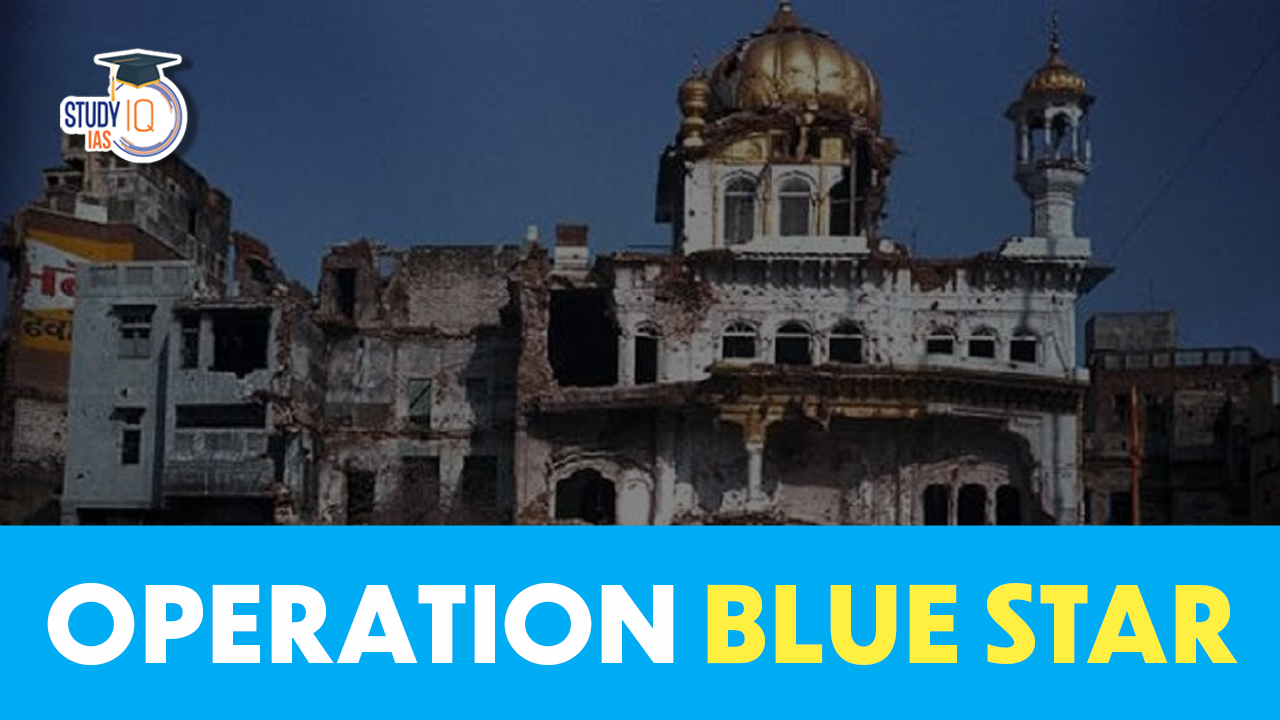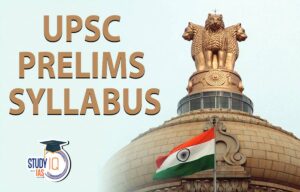Table of Contents
Operation Blue Star
Operation Blue Star was an action carried out in the Punjab state in 1984 by the Indian Armed Forces. When the Indian armed forces opened fire on several structures in the Golden Temple Complex on June 1, 1984, several civilians perished as a result. Operation Blue Star is an important part of History which an important subject in UPSC Syllabus. Students can also go for UPSC Mock Test to get more accuracy in their preparations.
Operation Blue Star Background
In order to seize control of the Harmandir Sahib Complex in Amritsar, widely known as the Golden Temple and a sacred Sikh temple, the then-prime minister of India, Smt. Indira Gandhi, authorised Operation Blue Star.
Jarnail Singh Bhindranwale wanted the Anandpur Resolution, which among other things called for the creation of a separate state of Khalistan for Sikhs, to be adopted by the Indian government. The extremist leader Jarnail Singh Bhindranwale had succeeded in gaining enough support for his cause by 1982, and by the middle of the following year, he had established a base inside the Golden Temple complex, with his supporters and munitions.
Taking back control of the Golden Temple from armed militants while upholding its holiness was not an easy task for the military forces. Operation Blue Star was launched as a result of the then-prime minister Indira Gandhi’s decision, made after nearly a year of talks and negotiations, to conduct a military operation.
Operation Blue Star in Detail
In order to apprehend Sikh leader Jarnail Singh Bhindranwale and his group of supporters who had taken up residence at the Harmandir Sahib Temple Complex (also known as the Golden Temple) in Amritsar, Punjab, and the Indian Army conducted Operation Blue Star from June 1 to June 10, 1984. At the time, it was the largest internal security operation to date, and the contentious operation was decided upon by the then-prime minister Indira Gandhi.
The early 1980s saw the start of an armed insurgency in Punjab, which was primarily motivated by the desire for Khalistan, a distinct Sikh country located in Punjab, India. The Khalistani movement was allegedly supported by Pakistani groups as well in an effort to destabilize the nation.
A regional political organisation in Punjab named Akali Dal passed the Anandpur Resolution in 1973, which among other things called for greater state autonomy. Bhindranwale founded the Dharam Yudh Morcha in 1982 in order to carry out the Anandpur Resolution after he joined the Akali Dal. Bhindranwale was a fiery leader who was successful in winning the support of young people in the state, particularly in the rural districts.
In the Punjab region of India, he stated his intention to create a semi-autonomous country for Sikhs after failing to have the Anandpur Resolution enacted. He stirred feelings by using more strong language to describe how Sikh values are being attacked in India. He and his supporters began to always have weapons on them. During this time, there were more violent incidents in Punjab.
In an effort to evade capture, Bhindranwale strengthened the Akal Takht within the Golden Temple complex in 1983. He spearheaded the effort to separate Punjab from the shrine along with his men. On June 1st, 1984, the Army started the effort to get him out of the compound. The authorities imposed a complete media blackout following the operation. The populace was also subject to a curfew.
Two supporting elements made up Operation Blue Star:
- Operation Metal, which aims to expel the insurgents hiding out in the Golden Temple.
- Operation Shop, which will purge Punjab of any remaining extremists.
Under the direction of Lieutenant General Kuldip Singh Brar, the actual storming of the shrine took place on June 5, 1984. Lt Gen Brar said that despite repeated orders from the army to surrender, the militants inside the temple refused. There are, however, further allegations coming from the opposing side. They claim that the authorities fired their first shot on June 1st.
The Harmandir Sahib compound was completely in the army’s control by June 7. Many of Bhindranwale’s top men were also slain in the operation along with him. 554 Sikh militants, civilians, and 83 military officials and troops have officially died, according to the Army. By June 10th, the operation was completed.
Operation Blue Star Aftermath
The storming of their holiest site caused great distress among the Sikh community in India and worldwide. Since June 3, 1984, was the Sikh Guru, Guru Arjan Singh’s martyrdom day, there were a lot of followers inside the temple complex, raising questions about the timing of the operation.
In retaliation for the operation, Indira Gandhi’s own Sikh bodyguards killed her in October 1984. This sparked anti-Sikh riots in Delhi and other regions of north India in 1984. Sikh terrorists killed General A.S. Vaidya, the Chief of Army Staff at the time of the operation, as retaliation in 1986. It is thought that the 1985 bombing of Air India Flight 182 was another act of retaliation for the operation.
The operation led to the mutiny of numerous Sikh soldiers in the Indian Army. Many Sikhs left their positions in the government’s administration. The operation is alleged to have escalated militancy in the state rather than putting an end to Khalistani terrorism in Punjab. The Punjab insurgency is believed to have ended only in the 1990s.
Operation Blue Star UPSC
Operation Bluestar was designed to take out armed followers of militant Sikh preacher Jarnail Singh Bhindrawale who were hiding out in Amritsar’s Golden Temple complex. The Indian Army carried out an operation in June 1984 to drive extremists from the Golden Temple in Amritsar, and that was 37 years ago. Although the Golden Temple’s sanctity was restored and militants and weapons were removed from the temple, many Sikhs harshly denounced the operation. PM Gandhi was killed by two of her Sikh bodyguards months later because she had authorized the operation. Students can read all the details related to UPSC by visiting the official website of StudyIQ UPSC Online Coaching.


 NATO Countries List 2025, Members, Funct...
NATO Countries List 2025, Members, Funct...
 UPSC Prelims Syllabus 2025 PDF, Check Su...
UPSC Prelims Syllabus 2025 PDF, Check Su...
 UPSC Toppers 2024 Felicitation Program b...
UPSC Toppers 2024 Felicitation Program b...





















